Some posts only go to subscribers via email. EXCLUSIVELY.
You can read more here or simply subscribe:
How we moved our business to the US (and the June report)
If you’ve been following my blog for a while, you know that we had big plans for this summer. Huge plans. Moving from one country to another.
And we did just that. We moved from our homeland of Israel to the US. We’re here now, in Florida, and I’m gradually settling in and getting back to work. Now that I finally have an office to work with, it’s time to catch up on Yeys.
This post will be mostly about how we managed to move across the ocean while keeping the business running with no interruptions. I’ll also include a mini report about our traffic and revenue in July.
Table of Contents
- Preparing for the move
- How we made sure the business kept on running
- What’s next
- The June 2021 Report
- The bottom line
Preparing for the move
We made the decision to move our web publishing operation to the US more than a year ago. Looking at the growth charts, we realized just how much potential this business had. We decided to go all the way in with our investment and grow the business even more.
Our websites target American audiences. Our writers and editors are American. It made more sense to move to the US and get closer to our markets and workforce.
I won’t bore you with all of the technical details. The process was long and time-consuming, and the pandemic made everything more complicated.
By early 2021 we had ourdates for the move. We then started making our plans.
How we made sure the business kept on running
One of our challenges was to make sure the business would keep running with no interruptions while we were on the move.
There was so much work involved with the actual move:
- Selling our belongings in Israel
- Moving out of our home
- Saying goodbye to our friends and relatives
- Packing up and flying to the US
- Buying a car
- Finding a place to live
It was easy to tell we would be extremely busy for a few weeks.
Here are a few things we did to facilitate a smooth move, and keep the business up and running – even with me not being around to monitor things on a daily basis.
Creating a timeline
We worked with a timeline throughout the entire process. With so many time-sensitive things to do, it was imperative.
Everything – from setting up the company to when to start packing – was put on a timeline. That way we could make sure we weren’t dropping the ball on anything that might be required down the road.
Using tasks and checklists
We used Clickup to track everything. The move was a project, so used Clickup to break it down into dozens of tasks and checklists.
Clickup made it easy to review our progress. You can switch the Clickup view seamlessly between gantt (a timeline of sorts) and a list of tasks. That made it easier for us to track everything. We used dependencies a lot as well, as some aspects of setting up the company were intricately connected.
Sticking to our routines and workflows
I love workflows. We are able to publish hundreds of articles each month thanks to our structured workflows.
Every writer, editor, and VA knows their place in the production workflow.
Clickup allows everyone to work as a team and make the workflow happen (you can read here about some of our Clickup workflows).
By the time we made the move, our workflows were well-established. Everyone on the team had been trained in using them. I had outsourced most of the roles out, so almost everything could be done without my involvement.
Except for one thing. I was still in charge of coming up with topics for new articles. More on that later.
Investing in a motivated team
We make a point of creating a friendly work environment. We talk to our VA’s, editors, and writers all the time. We try to connect with them, allow for time off when needed for family reasons. Things like that.
Why is that?
First and foremost, I think it’s the right thing to do. We’re all people, and like to be treated nicely. Being nice to one another makes for a better world. I want people who work for me to be happy and I like to try and be a positive influence in their lives.
I also believe that when you treat people well, they tend to reciprocate. And when they work for you, that means they tend to be more motivated and help you succeed.
When it was time for us to move, I knew I was leaving the business in trustworthy reliable hands. A group of happy, motivated, and well-trained people were holding the proverbial fort while we were on the move.
Working with buffers
Having set up workflows that were operated by a well-trained dedicated team, there was just one function where I was still needed: coming up with new post topics.
While I did train our Chief Editor for that, she could not take on handling the volume we needed. Producing 400+ articles every month requires a lot of “keyword research” time which she didn’t have enough of. Also, I like to do most of our topics. I think there’s a lot of experience-born intuition at play here, so I suspect I can come up with topics faster too.
In short, I needed to cover for myself on that front.
The solution was to create a large buffer of topics. As I mentioned in previous blog posts, I spent most of May and some of June doing just that. It felt like a moving target at times, but I managed to create a buffer of over 1,000 topics by the end of June. I knew I had July and August covered.
I expect to get back to topic creation this week. And I can do that with no pressure, knowing the writers already have enough topics to choose from during August.
Settling in – fast
Finally, to make sure that I can get back to work as soon as possible, we made an effort to settle in as fast as we could.
We were flying to Miami, Florida. That much we knew. We were unsure as to where we wanted to live, though. Florida seemed very nice but too many people warned us that the heat and humidity were unbearable.
We decided to come here and see for ourselves. We actually found Florida to be as hot and humid as the Tel Aviv area from which we came. Yes, that is hot and humid, but it’s not that bad. It just means you have to stay indoors during most of the day, which is what we do anyway.
Miami itself was tropical. It rained every day during our three days there. Twice a day, in fact. And it was the kind of heavy tropical rain that makes you take cover.
However, as we moved up north along the coast, to the Space Coast area, the weather improved. We’ve been here for almost two weeks now and have only seen rain twice. What’s more, we are now situated on the barrier island between the mainland and the Atlantic ocean. There’s a cool breeze here most of the time, which really takes the edge off the heat.
My son is a huge fan of everything related to space exploration, and he’ll be able to watch the rocket launches from here, which made for our final decision to stay here.
Here are some pictures, so as not to keep this post with no visuals!
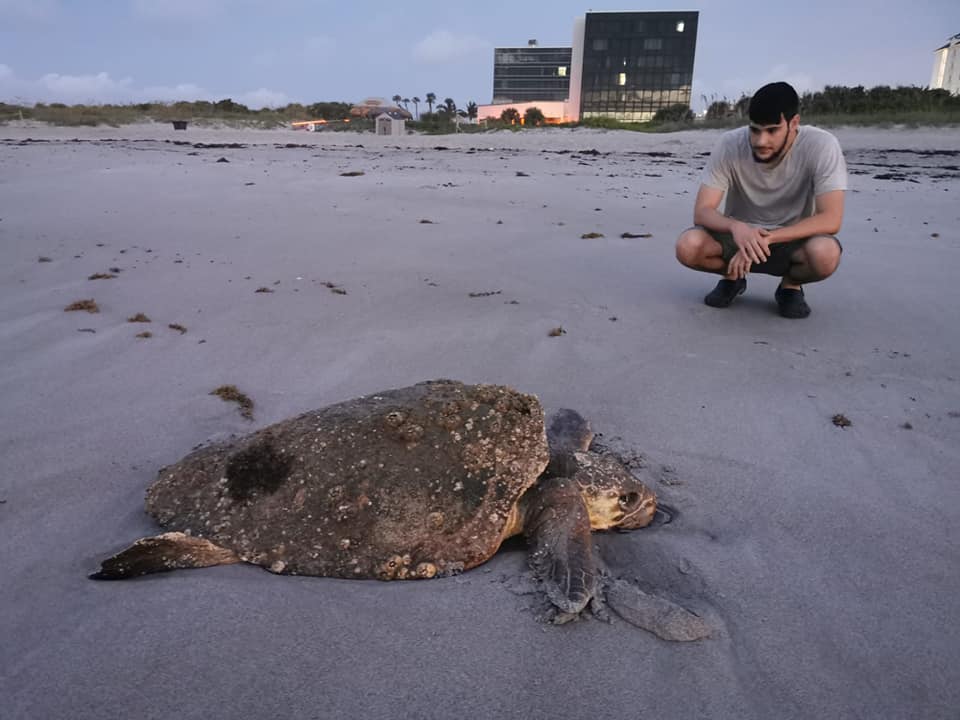
Sea turtles regularly come on the shore here 
Sunrise 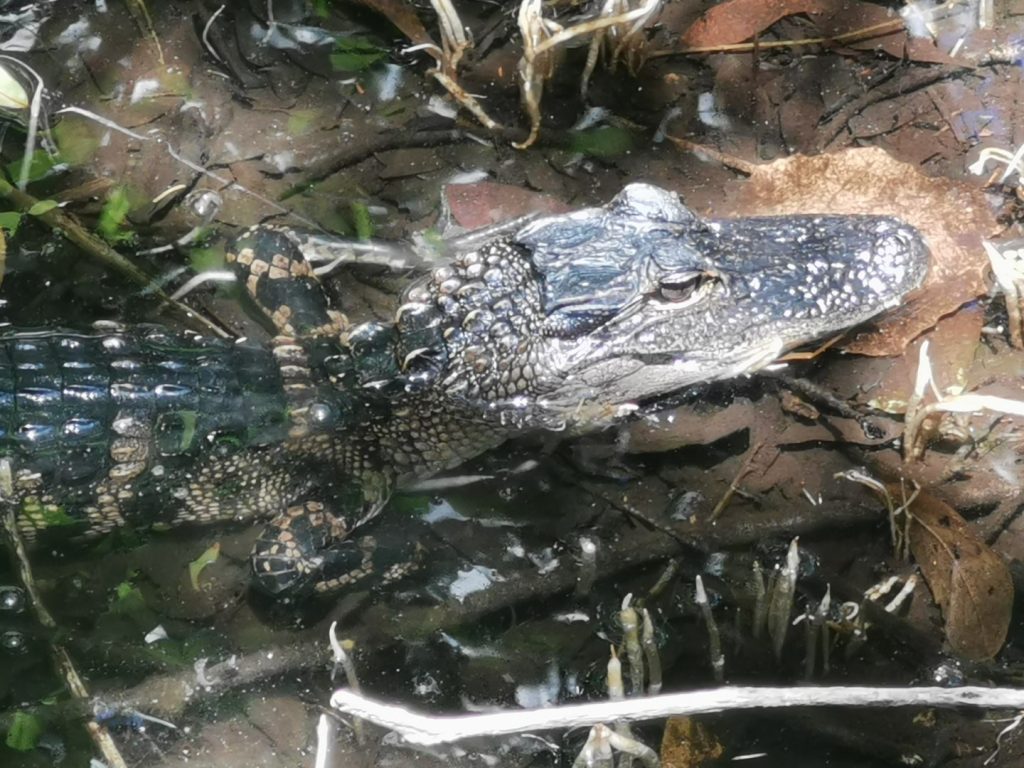
Yup, there are gators in Florida! 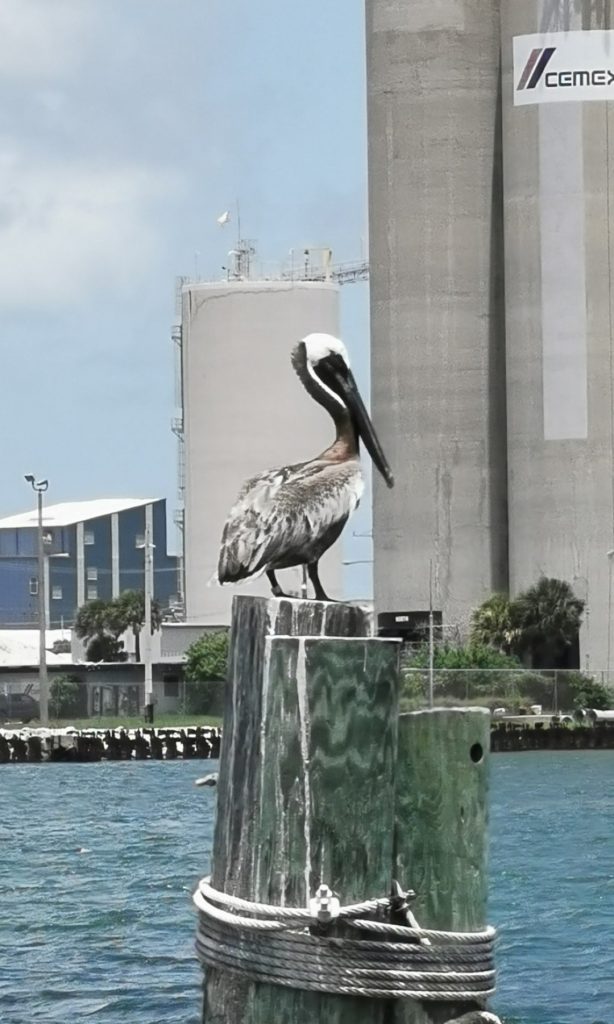
At Port Canaveral 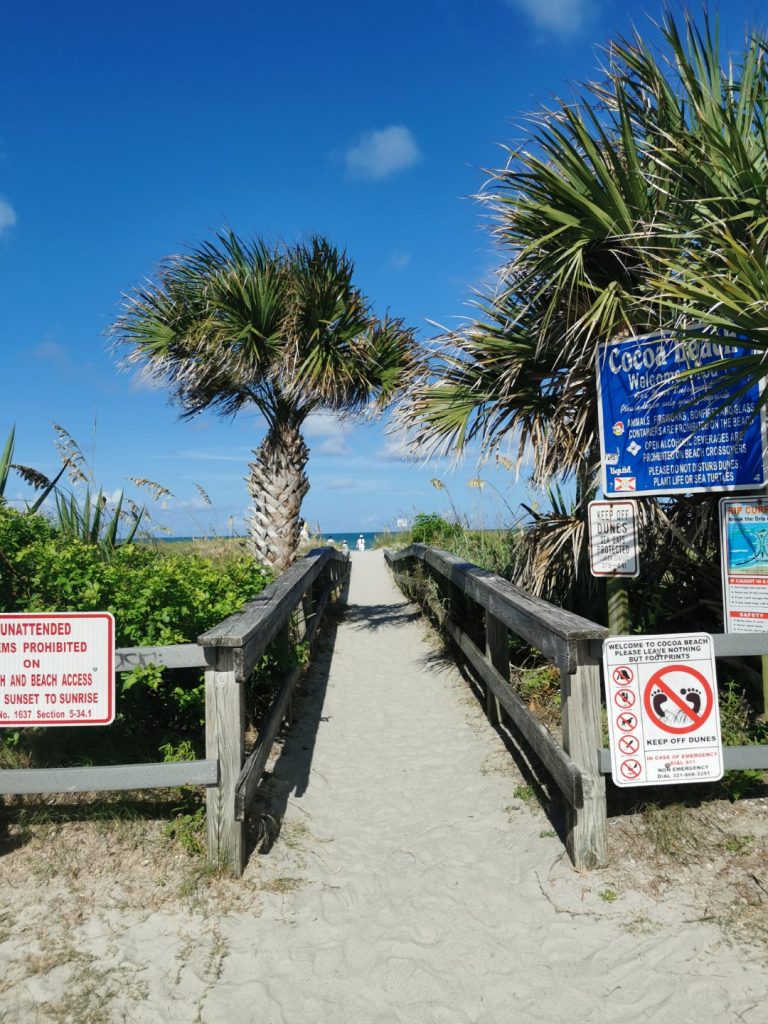
We now live 600 yards from the beach 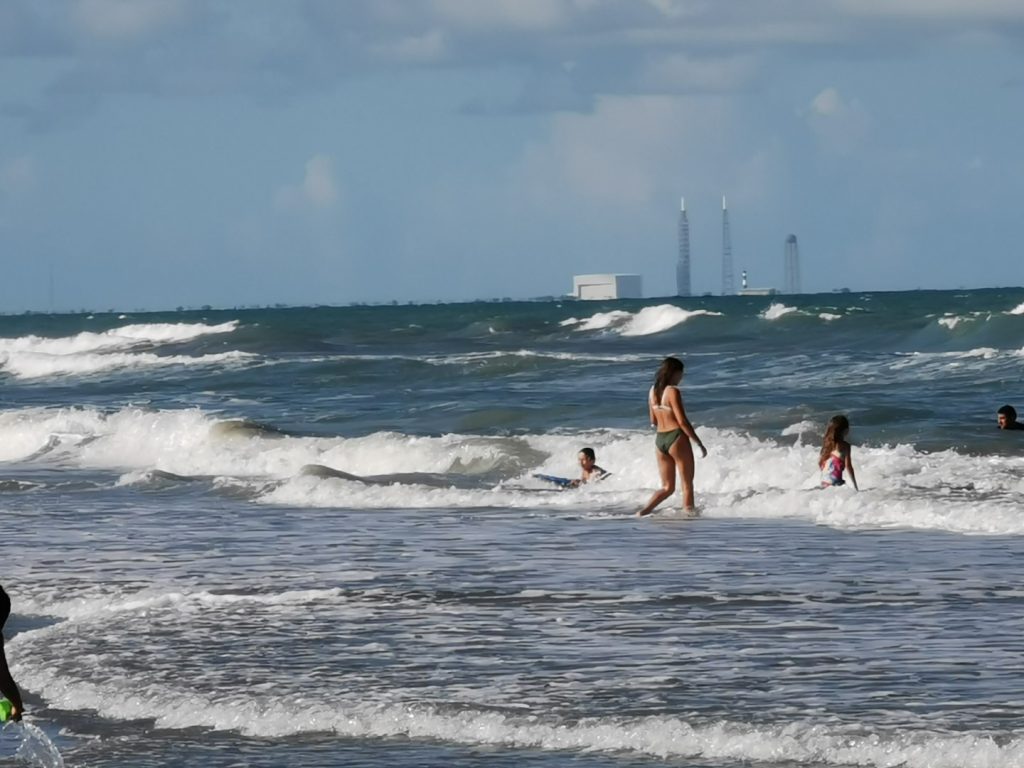
That’s rocket launch sites in the distance!
Back to the part about keeping our business going.
Most people would start looking for an unfurnished place at this point. Going through the hurdles of finding such a place, changing the utilities to their name, and then buying the furniture and setting everything up.
That can be very time-consuming.
To save on my work time, we decided to pay more and get a fully furnished place, with all expenses covered by the landlord. It’s more expensive, but since this is a long-term rental, it’s not as expensive as an AirBnB, while delivering the same kind of living experience.
We could have saved $1000 a month in rent, but we figured that the time it would take to get us up and running, along with the cost of furniture, balance that out. And most importantly, by getting into this home, we could set up an office right away.
We brought along my screen and keyboard and set up a nice docking station with my laptop in the study room here. So, I was all set up within a day after moving in. Fortunately, our landlord already converted one of the bedrooms into an office space, as per our request. This is what it looked like before I placed my docking station.
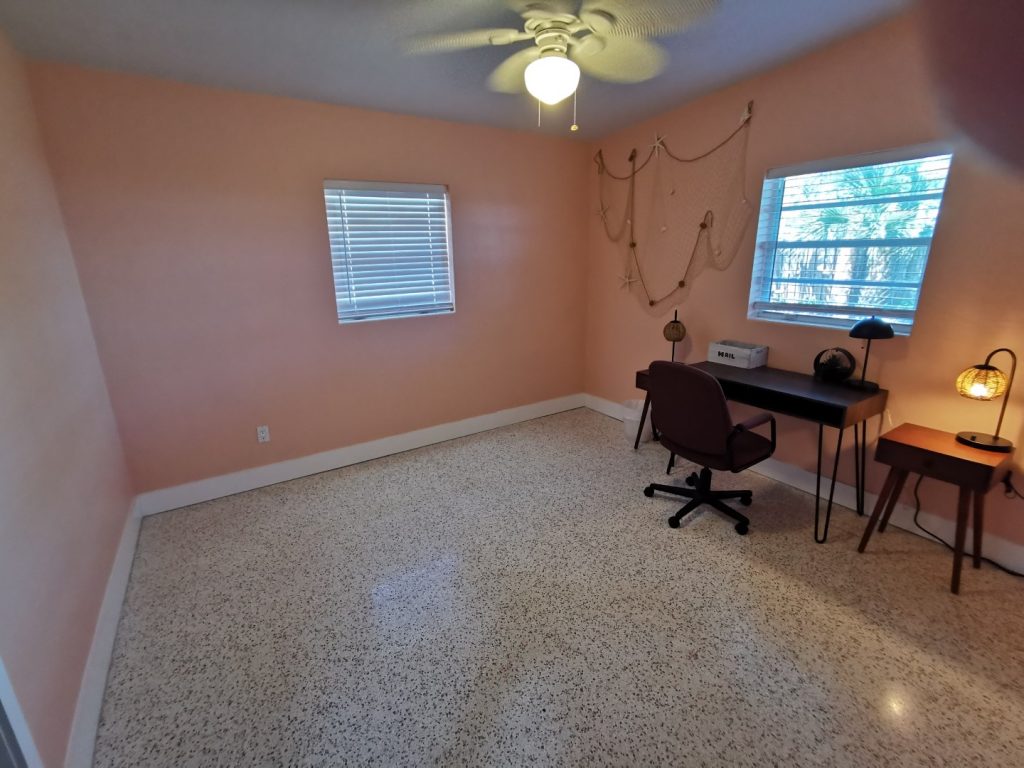
What’s next
It’s taken us a total of three weeks to get from getting the visa, packing up, leaving our old home, flying over, trying out the area, and moving into a new home.
During those three weeks, I checked my mail and kept in touch with my Chief VA and Chief Editor via Skype and Whatsapp. I checked my Clickup notifications occasionally as well.
Everything went smoothly.
And now it’s time to get back into the swing of things.
Fortunately, Clickup helps me track the daily routine stuff. That’s very helpful. But I don’t have any big projects lined up, and that’s strange.
My next step will be to generate another 500 new topics. I really like having this buffer of topics, and I want to keep it going moving forward.
Then I’m going to look at my “Ideas” file. That’s where I jot down my thoughts and ideas for developing my business. I’m going to give this some thought and see if and how to adjust our strategy for the rest of the year.
I’m not too worried. I’m sure I’ll find plenty of fun new projects to keep me busy. Now that I see how well our team can manage the routine production of content, I should have even more time to play with shiny new objects!
The June 2021 Report
Finally, July isn’t over just yet, so I can still sneak in a quick monthly report for June. If you’re new to this blog and aren’t familiar with my business model, you can read about it on the About Me page here.
June was pretty fabulous! Being the last month in a quarter always helps with RPMs. Amazon Prime Day also provided us with a nice little bonus, of an extra couple of thousands of dollars.
Let’s take a look at the numbers and charts.
Traffic on the niche/content sites went up by about 10% from 1,720,245 to 1,875,652 pageviews. We have an additional forums site that we’re keeping out of this chart because it has different traffic patterns. That site brings in an additional 1.3 million pageviews every month.

In terms of revenue, the increase was even more significant, mostly thanks to the higher RPM rates. Revenue went up from $69,986 to $85,105! That’s an increase of about 20%!

Our expenses in June
As always, this section is more about estimating our costs than tracking actual expenses. Even more so for June, when we had a bunch of relocation-related expenses that are likely irrelevant to anyone reading this report.
I put the production per post costs at $70 per post. That number includes writer fees, editing fees, and VA fees. We published a total of 449 posts in June, putting our content investment expenses at $31,430.
As usual, I prefer to add an overall $3K in general expenses. That’s on top of the cost of each post. It’s probably a bit too much, but I prefer to err on the side of caution.
That brings us to a total of $34,430 in expenses.
The bottom line
$85,105 in revenue and $34,430 in expenses brings us to a total of –
$50,675 in profit!
And that’s AFTER content investment!
If we were to stop investing in content, then we would have made a total of more than $80K!
While our business plan predicted these figures, we didn’t think we’d reach them so soon. But again, this was June. July is shaping out to have lower revenue ranges, thanks to the lower RPM of the first month of the quarter. Still, six more days to go, so who knows.
I hope you find this report inspiring. That’s one major reason for me sharing these figures. It’s taken me a few years to these figures, but it’s totally doable!
As always, your comments are very welcome!

Great post. Was waiting for the June update. Your blog is great for small publishers looking to scale.
Thank you, Ariel!
This is amazing and very inspiring! You’ve achieved so much even with the move.
I remember watching the space shuttle launches from Cape Canaveral when I was young, so the area you’ve moved to is full of history.
My wife and I are extending our house this year in the UK and I’d never thought of managing the project in ClickUp – but we’ll definitely do this now.
Regarding site building, my first site is now at 20K page views and $400 pm in month 8 from 250 articles, so I’m ramping up content production and hope to get to 50k page views and over $2k before starting my second site. I’m over $20 EPMV so I’m on the way.
It’s so good to look at what you’re doing and know I’m on the right track.
Good luck in your new home 🙂
Thanks Loz! You were very lucky to grow up here. Gorgeous area! It definitely sounds like you’re on the right track to me. $400 for an 8 months old site is actually better than what most of my sites do at that age. Good luck!
It would be great to learn about your link building process. Just throwing up mass amounts of content wouldn’t result in rankings alone.
Hi David,
I don’t do any active link building. I just go after long-tail queries with great content. Mass amounts of junk content wouldn’t work, but looks like enough good content does. At least it has been working for me for the last 2-3 years.
Thanks Anne – Glad you arrived safely
God Bless
Greg & Darlene – Pickerington Ohio
Thanks, Greg and Darlene! Great to be here!
Congratulations on the move and very happy to read it all went smoothly!
However, you mentioned that you didn’t want to “bore [us] with all of the technical details” of moving the business from one country to another. Maybe this is just me being boring, but I’d actually be very interested in how you went about doing this, particularly given it’s something I may have to do in the next 12 months myself. So if there’s any time for you to write that article, you’d have at least one reader here!
Hi Amy,
I think there are several ways to go about it, and ours was probably relevant to people from countries that have an E-2 visa treaty with the US. As far as I can tell, Australia isn’t one of those countries, but I’m sure there are other ways if you’re coming from Australia.
In a nutshell, in case anyone else is interested, the E-2 visa process calls for investing a substantial amount of money in an at-risk business in the US, creating at least one job for Americans, and hopefully more jobs down the road.
Our business met all of those criteria, so that type of visa worked for us. We set up the business as a US company in January, and then documented all of our investments in 2021, got our chief editor on the payroll, and generally covered everything formally, and with perfect documentation. Then we submitted the application to the US embassy and two months later were called in for an interview and granted the visa.
IF you have any questions on anything, just let me know. As a whole post, it may end up being the dullest one ever on this blog lol.
I would wanna read that as well. I’m sure you’re the best person qualified to write about this topic.
Hey Anne,
Incredible report. I’d love to know more about the visa process you opted for along with medical insurance. As someone who’s often toyed with the idea of moving from the UK to the US this was certainly an interesting read 🙂
Hi Cora,
Just reading your comment, following Amy’s above, now I’m thinking this may be less dull than I thought. I’ll give it some more thought.
As far as medical insurance goes, it’s not overly complicated, just expensive. Anyone can get medical insurance in the states, but depending on your age and health, it could get costly. There are also things like deductibles etc. I can’t say I’m an expert on that just yet. I will say that when we were planning the move, we set aside $3K per month as our health budget for our family. This covers a decent insurance plan + any deductibles throughout the year. It’s a lot of money when you come from a country with free public health services, but if the business succeeds, then we’ll be saving more than that in taxes and it will more than even out.
The visa itself is an E-2 which is available to Brits. It requires you to set up a business in the US, where you’ll be investing a substantial sum of money and generating at least one job for a US citizen, as well as supporting yourself and your family. It’s for two years but can be extended pretty much indefinitely as long as your business keeps on the criteria are met.
Thanks, Anne. I have a question though.
Since your expense is an estimation, how do you calculate the tax precisely?
Oh, we calculate taxes very precisely. I just don’t deal with that side of things myself. I pay around $1000 to a (hopefully) good accountants firm who do the taxes for me. Each and every expense is documented, but many of them are on an annual basis, for example. Also, with the move, there were many relocation expenses and just lawyer/accountant fees that really weren’t that relevant to the reports here. Most people will never have those expenses. That’s why I stick to estimating the actual costs of producing content and running the business.
That was great. Was waiting for the june report eagerly.
Your blog is great for small publishers like me who are aspiring to scale.
How much do you think is the limit to an operation like this?
Say you have team that’s 10 times the size and if you can still maintain quality, can’t you make the revenue 10 times?
Like a million dollars a month maybe?
Wonder if anyone does it at that scale.
Hi John,
That’s a fantastic question. I’m not sure what the answer is but I think that I would prefer not to put all of my eggs in the content sites basket. So, the plan now is to scale just a little bit more with the content sites, probably to around 600-700 posts per month. I am confident that I can manage that. And then after everything settles into a nice routine, I want to look into expanding in another direction. Either YouTube videos or dropshipping. Not sure which just yet. Just to have a separate income channel.
Well done for the move. Massive achievement considering your content output, really impressed!
Thank you, Andrea!
Amazing process!
Would you say the majority of you revenue is ad revenue? Or is it a mix of ads, affiliates, products etc. ?
Hi Jack,
We had about $10K from Amazon in June, and that’s the only significant affiliate revenue source for me. The other $75K were from display ads.
Congrats on the successful move and the epic profit! We stayed in Cocoa Beach a few years back and I really like the area. I could see us enjoying living around there for sure.
Thank you, Emma! Yes, it’s really nice here. We ended up renting in Indialantic, which is about 45 minutes to the south of Cocoa Beach. Still on the barrier island and very pretty!
Hi Anne, how did you manage to get a US Visa so soon to move to the US and what type of Visa did you move on?
Hi Craig,
We are here on an E2 Investors’ visa. We basically moved our business to the US, hiring locals on the payroll (already hired one person full-time and plan on hiring more). It’s taken us about a year to get the visa. They do check a lot of things and you have to provide tons of documentation. E2 visas are issues for two years, but you have the option to apply for extensions, as long as you have your business in operation (and making a profit). Some people stay for decades on an E2 visa.
This type of visa isn’t available for every country, though. So if you’re interested, you should check and see if your country is on the list of E2 treaty countries.
I am a freelance writer in India who owns a portfolio of affiliate sites. I want to move to a first-world country. This is really inspiring. Thanks!
Best of luck with your websites and plans, Mohit!
Hi Anne, I always wanted to move to the USA too, and I know that I can apply to E-2 visa from Argentina. What I didn’t know is that I can apply with this kind of business. What do you think is a good income number to apply? I know that is not an exact number, but do you have an estimate?. Thanks!
Hi Martin,
I would definitely start by consulting an immigration lawyer who specializes in E2 visas from Argentina. For Israel, the figure was $80K-$100K of investment, according to our lawyer. I know some people go lower and succeed, but this type of business is less familiar, so we wanted a more solid case. And of course, there’s no guarantee… Good luck!
Thanks for the article! Was good to learn about your business story.